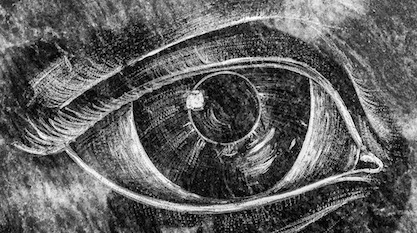 Evolution
Evolution
 Intelligent Design
Intelligent Design
 Life Sciences
Life Sciences
Design (But Not Design) Is the New Unifying Principle of Biology


Richard Dawkins once said, “Biology is the study of complicated things that give the appearance of having been designed for a purpose.” (The Blind Watchmaker, 1996, p. 1)
Despite this appearance of design, Dawkins is, of course, a leading proponent of the Modern Synthesis or neo-Darwinian Synthesis of evolution, a mechanistic theory of population genetics and random variation by mutation. In the Modern Synthesis, exemplified by his book The Selfish Gene, all purpose is illusory; there is only mechanistic process. However much we might be tempted to believe that the human eye was designed for seeing, this view says no, the eye is an accident, and it persists only because its effect is to make it more probable that the corresponding genes will propagate to the next generation.
To most people this way of thinking is extremist and absurd. The eye is for seeing, whether or not it has any effect on genetics. However, this common-sense view has a problem: to say that the eye is “for” seeing is to say it has a purpose, a design; and purpose suggests an intentional agent, while design suggests a designer. Darwin’s great contribution was to show, it seemed, that there was no creator, or at least that there is no need for that hypothesis. Darwin destroyed Paley’s argument from design by showing there needn’t have been any designing.
Therefore, in the interests of avoiding confusion (that’s putting it politely, as I hope you will see), evolutionists have tried to avoid speaking or thinking in a way that implies intelligent design. For example, we are told not to think of complex subcellular structures as “molecular machines,” and we are told they are not like human-designed machines. Of course, to some extent this is true; there is no human machine that can operate at such tiny scales in a wet environment and survive relatively hot temperatures which manifest as violent jerking and twisting motions, let alone a machine that can harness that violent energy like a flagellum does (for example). Human machines are likely to be made of solid metal, not out of locally sourced, configurable, and recyclable proteins. Most of all, human machines are not found in the context of complex self-replicating organisms which can undergo Darwinian evolution.
But are these really the kinds of difference that make a design not a design, or a purpose not a purpose? Not really. It’s the opposite; in fact purpose is often clear, and the design is beyond our abilities, not beneath them. The fact that these machines are assembled in a complex autonomous cell that can grow and replicate itself does not reduce the signal of design, but increases it. Any human biotech firm would love to be able to create life; the design motivation is surely there, only the technology is missing (and will be for a long while).
Secondly, biology is becoming more and more like an engineering discipline. Witness the rise of Systems Biology, the study of the complex integration in biological systems, which borrows heavily from the discipline of Systems Engineering.
Thirdly, it has become apparent that where evolution is observable and effective, it not only has a purpose — consider the evolution of antibodies in order to better bind foreign antigens — but also a corresponding design — consider the several components of the antibody genes, where variability is limited to specific regions in order to maximize the potential for matching new antigens and to minimize disruption to the rest of the structure. Consider that natural selection is a “process” of stupidly waiting to see what dies, which may or may not even retain complex features (consider cave fish that lost their eyes), while sexual selection is an intelligent process — organisms purposefully selecting features, thereby directing the evolution of their species. Insofar as these behaviors are pre-programmed, they imply a design, and evolution is led by that design.
In contrast to the “Modern Synthesis,” these and other processes are often included under the heading of the “Extended Evolutionary Synthesis.” In a paper in the journal BIO-Complexity described here by Ann Gauger, Jonathan Bartlett argues that these share a feature he calls “Evolutionary Teleonomy.”
So what is “teleonomy”? Mainstream scientists continue to be philosophically allergic to the idea that design (the observation) is caused by design (the intelligent process), or too afraid to be seen to acknowledge it. This has led to the coining of a new term and a new distinction: the hard-to-deny facts of biological purpose and design are now labelled “teleonomy,” whilst the contentious and frightening “theological” idea of a primordial actor or creator is now labelled as “teleology.” They loudly assert that teleology has long been discounted and now teleonomy takes its place. That’s fine if you want to believe it. All we are going to do here is to point out that facts have driven biology back towards notions of design, and mainstream scientists are going as far as they dare to bring back into biology thoughts that most of us already knew intuitively. Good for them. May it continue.
Image: Human eye, by FelixMittermeier, via Pixabay.
